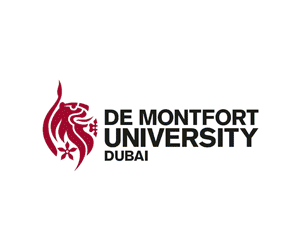17 FEBRUARY 2014
SOURCE: Times Higher Education Supplement;
The California Institute of Technology (Caltech) has been top of the Times Higher Education World University Rankings f...or the past three years and has produced 32 Nobel Laureates in just 123 years.
The secrets of its remarkable success were explored in THE’s 6 February 2014 cover story, which attracted worldwide attention.
(Further information, latest Scholarships and Student News can be found on our FB page the details which are shown below).
https://www.facebook.com/resourcemanagementonline
Here, Times Higher Education rankings editor Phil Baty gives his 10-point guide to the elements that make Caltech special.
Caltech: secrets of the world’s number one university
6 FEBRUARY 2014 | BY PHIL BATY | PAGE 1 OF 5
How does a tiny institution create such outsized impact?
I always refer to Caltech’s small size as being very similar to the size effect that exists in materials - there are special properties that exist when you are extremely small
If one were to reduce the story of the California Institute of Technology to numbers, it would be difficult to know where to start.
It is 123 years old, boasts 57 recipients of the US National Medal of Science and 32 Nobel laureates among its faculty and alumni (including five on the current staff).
It is the world’s number one university – and has been for the past three years of the Times Higher Education World University Rankings – and has just 300 professorial staff.
In short, it is tiny, and it is exceptionally good at what it does.
Ares Rosakis, chair of the Division of Engineering and Applied Science, describes Caltech as “a unique species among universities…a very interesting phenomenon”. “Very interesting” may be something of an understatement.
Caltech’s neat and unassuming campus sits in a quiet residential neighbourhood in Pasadena, in the shadow of the San Gabriel Mountains.
Although it is only 15 miles away from Hollywood, the Tinseltown razzmatazz seems a world away.
But Caltech can lay claim to its own galaxy of stars. Among a long and illustrious list of former faculty is Charles Richter, inventor of the scale that quantifies the magnitude of earthquakes (handy in Southern California) and Theodore von Kármán, the first head of what is now Nasa’s Jet Propulsion Laboratory.
He nurtured the pioneering “rocket boys” who risked ridicule in the 1930s as they brought space rockets from the pages of science fiction comics into the real world.
The heavy hitters on the current staff include Mike Brown, the man who “killed Pluto” (when his work led to its being downgraded to a dwarf planet), and John Schwarz, who in December 2013 was named a joint winner of the $3 million (£1.8 million) 2014 Breakthrough Prize in Fundamental Physics.
It is clear that Caltech is a special place, but how has it achieved this success? Rosakis’ first answer focuses on its size.
“I always refer to this small size as being very similar to the size effect that exists in materials – there are special properties that exist when you are extremely small,” he explains in his airy office, the winter sun streaming through a bank of windows on to a chalkboard filled with mathematical formulae.
Working alongside the 300 professorial faculty are about 600 research scholars and, at the last count, 1,204 graduate students and just 977 undergraduates. The private not-for-profit university’s freshman “class of 2017” consists of a mere 249 students.
While diminutive scale may be a disadvantage for some institutions, for Caltech, it is at the heart of its being, and perhaps the single most important aspect of its extraordinary global success.
Crucially, it means that Caltech is obliged to be interdisciplinary in its “mode of operation – whether we like it or not”, observes Rosakis.
“I have 77 faculty in engineering and applied science. MIT [the Massachusetts Institute of Technology] has 490. How can I compete with an excellent place like MIT? We have to have engineers interact with all of the sciences and vice versa – it is a matter of survival. We don’t have the breadth to do things in a big way unless they interact.”
If Caltech’s size demands that its faculty work across traditional disciplinary boundaries to survive, it also makes such interaction exceptionally easy and natural.
While it may sound like a cliché, at Caltech exciting interdisciplinary ideas really are generated over a cup of coffee in the campus cafe, according to faculty.
Fiona Harrison, Benjamin M. Rosen professor of physics and astronomy, has worked with colleagues in aeronautical engineering, applied physics and many other disciplines.
Read the full article here ;
http://www.timeshighereducation.co.uk/news/10-reasons-why-caltech-is-the-worlds-number-one-university/2011321.article
Resource Management
Your One Stop Solution Provider
The Professionals
Visa & Admissions
Resource Management
London, USA, Canada, Islamabad G-9/3
+(92)(51)8351093
+(92)(51)8351094
+(92)(0)3358075935
visaandimmigration@yahoo.co.uk
Skype: tanvier1786
https://www.facebook.com/resourcemanagementonline
https://google+com/resourcemanagement
https://twitter.com/tanvier1786
" The Impossible We Do At Once Miracles Take A Little While Longer"



.gif)


 12645
12645
 0
0



























